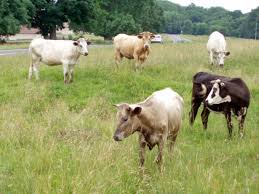
The tragedy of the commons (Hardin, 1968) extends the two-person prisoner’s dilemma to a case of many people in a group and applies to whaling, forest and wildlife conservation issues. In it, some farmers each with cows and a plot of land live by a common grass area. If a farmer’s herd also grazes the commons it grows fat, but if over 50% of farmers do so, the commons is overgrazed and dies off.
Working as individuals each farmer’s logic is:
• My actions are independent of those of the other farmers.
• If ≤ 50% graze it pays me to graze, as I get more value.
• If > 50% graze, it still pays me to graze, as I get more value initially.
It always pays each farmer to graze the commons by game theory so they must destroy it. In a hypothetical case, say 100 farmers each get a ton of beef per month grazing their own plots, and three more tons grazing the commons. This reduces by one ton each month of overgrazing, to become barren in three months. Table 5.3 shows farmer outcomes by choice for 10 months. By Rule 1, the average graze benefit is 28, while the average not-graze benefit is 10, so graze is preferred. Destroying the commons to everyone’s loss is the equilibrium point predicted by Game Theory.
|
Outcome |
Other Farmer |
||
|
49% graze |
Over 49% graze |
||
|
Farmer |
Do not graze |
10 |
10 |
|
Graze |
40 |
16 |
|
Table 5.3. Tragedy of the commons individual outcomes
Working as a social unit gives a different conclusion. The social acts available to the village are by what percentage to graze the commons. Table 5.4 shows the expected outcome per farmer for overgrazing is 1,600 tons over 10 months, while the expected not overgrazing value is 2,500, making it the preferred choice. A village following the social Rule 2 will save the commons as a valuable community resource.
Social cooperation works: Axelrod invited programs for a simulated survival of the fittest social interaction tournament to see which survived. He found that none of the eight most successful programs initiated defection (Axelrod, 1984). Nasty programs succeeded at first but in time ran out of victims and met only other nasties, while cooperative programs found allies and prospered. Social cooperation evolved as the best strategy.
|
Outcome |
Social Outcome |
|
|
Social Act |
Not overgraze |
2,500 |
|
Overgraze |
1,600 |
|
Table 5.4. Tragedy of the commons social outcomes